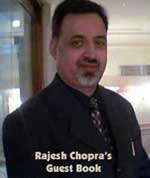
The effect of this change can be heard
clearly when we play chords incorporating the two
As you can see, the pitch of the altered
note in the second chord is indicated by a 'flat' sign &)
|
|
Teaching To Play Piano
Major and Minor Chords
.

The effect of this change can be heard
clearly when we play chords incorporating the two
As you can see, the pitch of the altered
note in the second chord is indicated by a 'flat' sign &)
|
|
| In the period lasting from about 1790 to 1860, the Mozart-era piano
underwent tremendous changes, which led to the modern form of the instrument.
This evolution was in response to a consistent preference by composers
and pianists for a more powerful, sustained piano sound. It was also a
response to the ongoing Industrial Revolution, which made available technological
resources like high-quality steel for strings (see piano wire) and precision
casting for the production of iron frames.
Over time, piano playing became a more strenuous and muscle-taxing activity, as the force needed to depress the keys, as well as the length of key travel, was increased. The tonal range of the piano was also increased, from the five octaves of Mozart's day to the 7? (or even more) octaves found on modern pianos. In the first part of this era, technological progress owed much to the English firm of Broadwood, which already had a strong reputation for the splendour and powerful tone of its harpsichords. Over time, the Broadwood instruments grew progressively larger, louder, and more robustly constructed. The Broadwood firm, which sent pianos to both Haydn and Beethoven, was the first to build pianos with a range of more than five octaves: five octaves and a fifth during the 1790s, six octaves by 1810 (in time for Beethoven to use the extra notes in his later works), and seven octaves by 1820. The Viennese makers followed these trends. The two schools, however, used different piano actions: the Broadwood one more robust, the Viennese more sensitive. By the 1820s, the center of innovation had shifted to Paris, where the Érard firm manufactured pianos used by Chopin and Liszt. In 1821, Sébastien Érard invented the double escapement action, which permitted a note to be repeated even if the key had not yet risen to its maximum vertical position, a great benefit for rapid playing. When the invention became public, and as revised by Henri Herz, the double escapement action gradually became the standard action for grand pianos, and is used in all grand pianos currently produced. Some other important technical innovations of this era include the following: Use of three strings rather than two for all but the lower notes
Some early pianos had shapes and designs that are no longer in use.
|
 |
 |